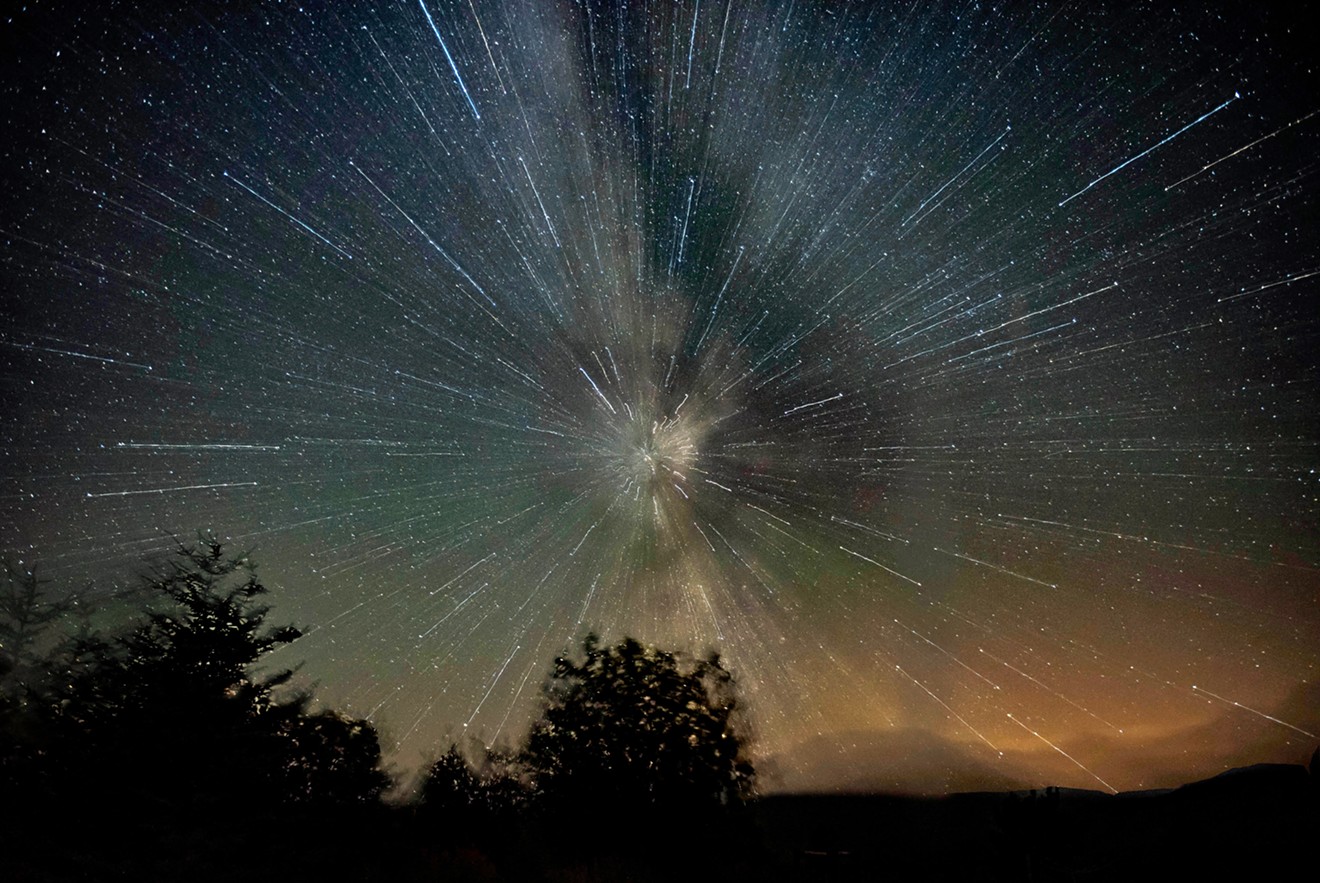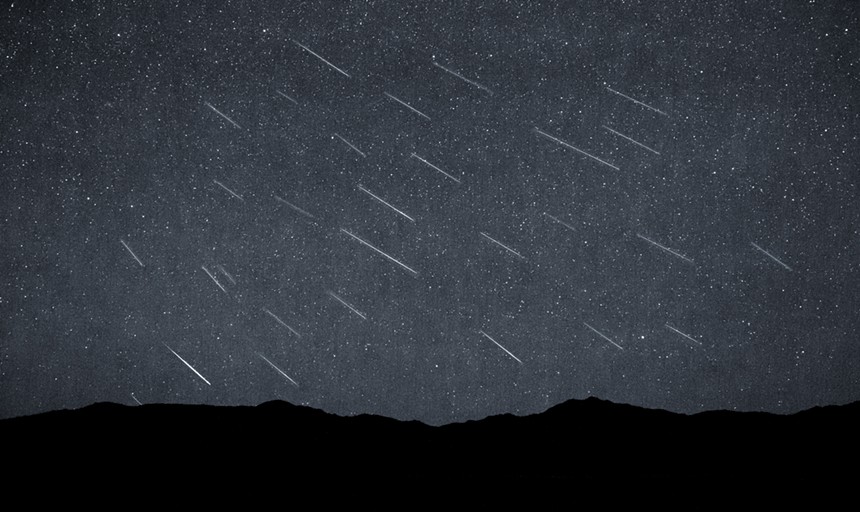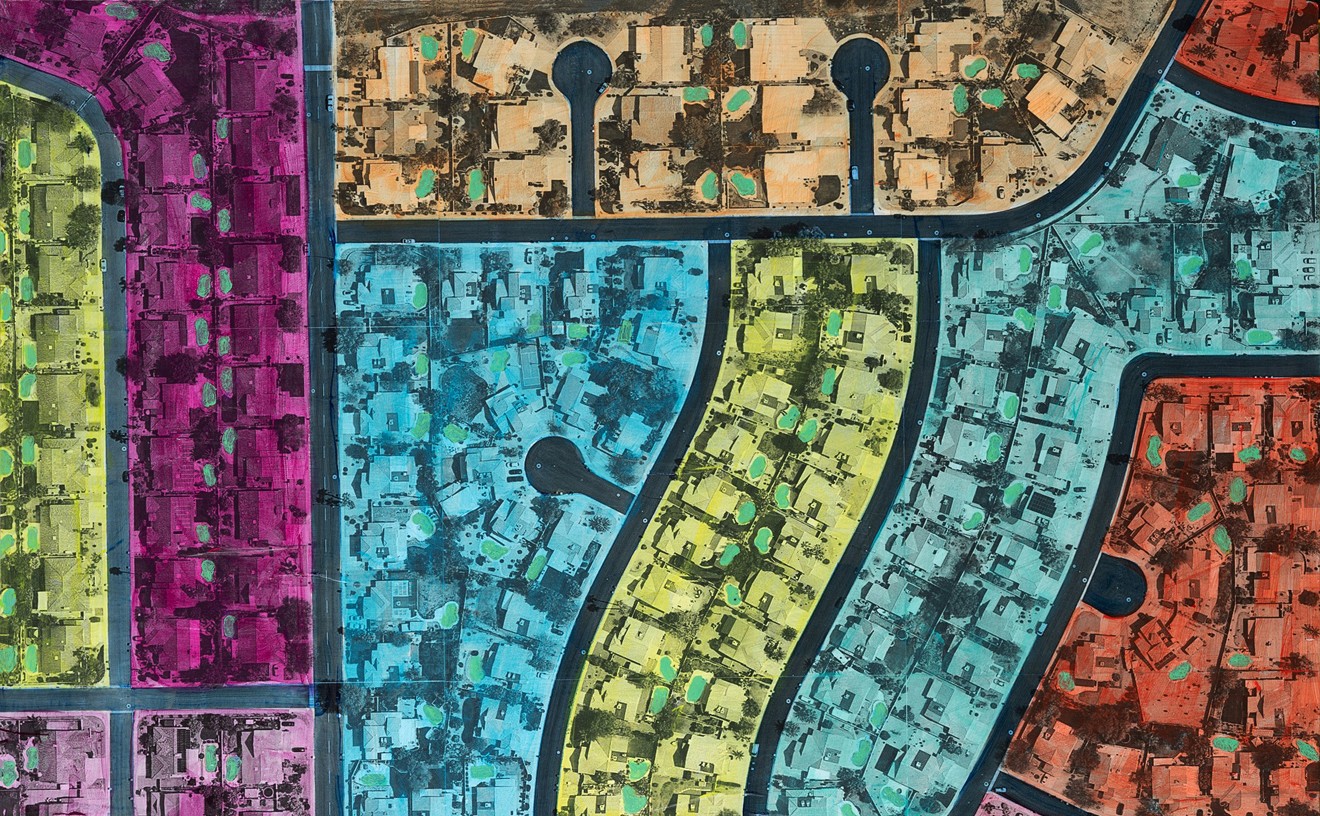The Perseid meteor shower, which occurs every August, will put on a spectacular show as dozens of visible meteors burn through our atmosphere. The annual celestial event will peak this weekend with 60 to 100 meteors per hour visible under optimal viewing conditions.
It makes for a spectacular show says local astronomer Pete Turner, who told Phoenix New Times in 2020 the Perseid meteor shower is one of the major skywatching events of the year.
“It's the number of meteors that makes the [Perseids] the biggest,” says Turner, a member of the Phoenix Astronomical Society. “It's something that we look forward to every year.”
Like other meteor showers, the Perseids (which get their name from the fact they appear to emanate from the constellation Perseus) are caused by the Earth passing through a trail of ice, dust and other stellar matter left behind by a passing comet — in this case, 109P/Swift-Tuttle.
Each year, the Perseids begin in late July and take place throughout August and into early September. The number of meteors grows steadily each night, reaching an apex in intensity in mid-August. In 2023, the peak will occur on Sunday. (There will be a roughly similar amount of meteors on the nights before and after the peak.)
This year, the night sky will be darker than usual during its peak since the moon will be in its waning crescent phase and won't give off much light.
While you can see meteors from anywhere in Arizona, Claude Haynes of the East Valley Astronomy Club says that locations with darker skies away of city lights offer more optimal viewing. It also helps if you put away your phone.
“It’s time well spent since you can get away from your screens for a few hours at least and enjoy the outdoors,” Haymes says.
Haynes has a few suggestions on how to best view the Perseids, such as traveling to parts of the metro Phoenix area where the sky is darkest or refraining from using illuminated electronic devices to allow your eyes to adjust.
“Obviously, you want to be in an environment with as little light as possible and where your eyes are dark-adjusted to be able to see the meteors,” he says.
Read on for more tips on how to see this year’s Perseid meteor shower and get info on when and where to watch the celestial event unfold in the skies. What night does the Perseid meteor shower peak?
When’s the best time to see the Perseid meteor shower?
According to amateur astronomers like Haynes and the folks at the American Meteor Society, you'll want to start looking just after midnight on Sunday. That's when the constellation Perseus starts rising in the sky each night. (Again, you can still see shooting stars on the evenings before and after those dates, but the peak will offer the greatest possible number of meteors.)Where are the best places to see the Perseid meteor shower?
Basically, anywhere with open stretches of sky that are far away from light pollution or street lamps. You’ll be able to see meteors anywhere in the Valley, including in the middle of the city, but your odds improve if things are as dark as possible. If you live on the outskirts of the Valley, you should already be good to go. If you’re in the middle of metro Phoenix, consider taking a trip out to the boonies. To wit: Haynes suggests spots like north of New River or west of Buckeye.
“You want to go somewhere where it's really dark, which sometimes means going a few miles out of town,” Haynes says. “We sometimes go to Picket Post Trailhead out [east] on Highway 60 past Phoenix.”
You can also hit up the website Clear Sky Chart, which offers skywatching and visibility forecasts for specific locations.

The Perseid meteor shower will bring 60 to 100 shooting stars every hour.
Channone Arif/CC BY 2.0/Flickr













